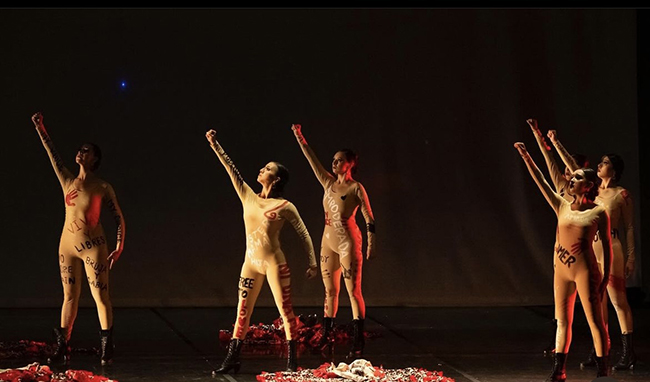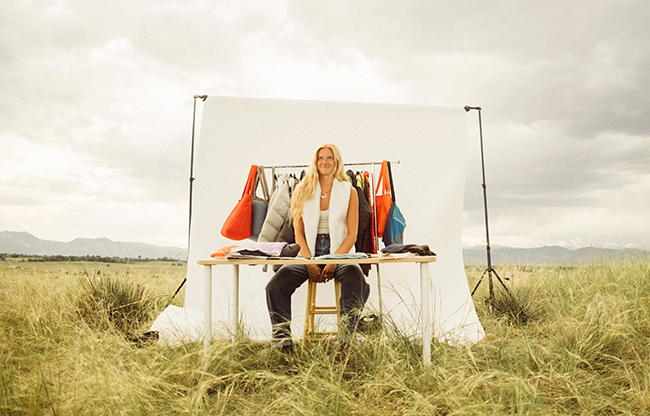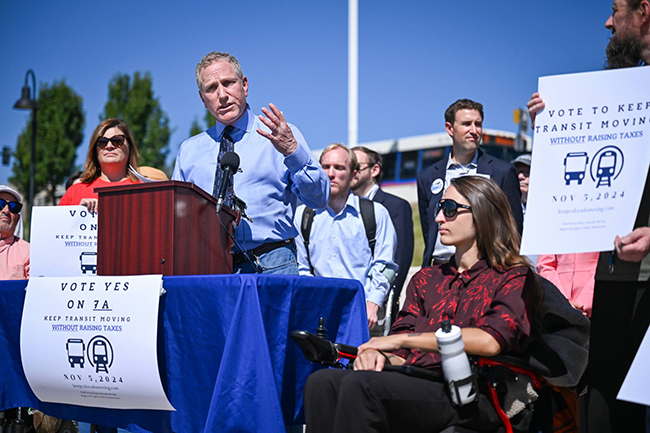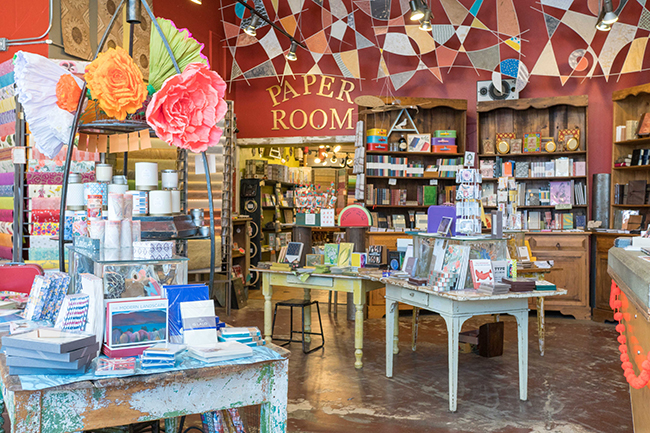A Snippet of Colorado’s Historied Ski Culture
13 Dec 2021
Snow Shadows
By Julie Kailus
As a young writer new to Colorado in the late ’90s, I will never forget the stories I uncovered during the publishing of a vintage poster called “Colorado’s Lost Resorts.” It brought together everything I loved: mesmerizing mountains, history of outdoor adventure and an anthropologic imagining of the first skiers in the state.
The history of Colorado ski culture—to the tune of some 170 ski areas—is so vast and so varied, we couldn’t possibly have covered it in one poster. And I won’t pretend to capture the complete picture here, but let’s try for a snapshot.
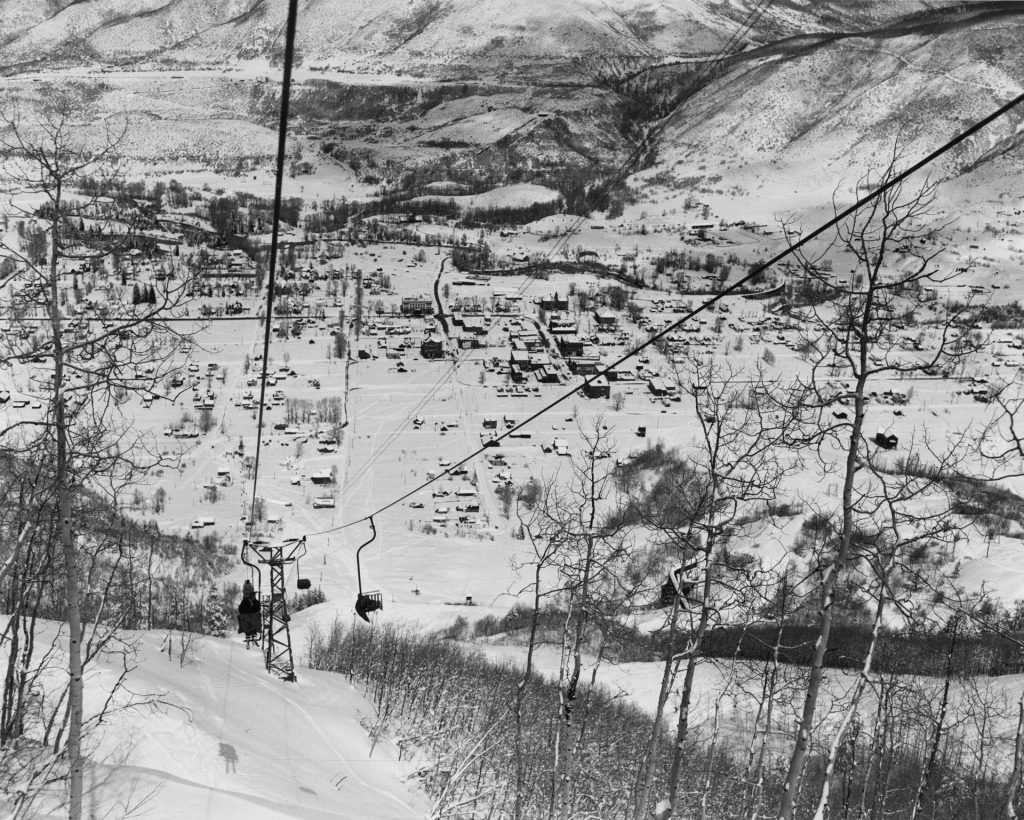
Ski lift in Aspen. Estimated to have been photographed between 1920 and 1950.
Who were Colorado’s first skiers?
When gold mining brought flocks of adventurous souls in search of riches to the rugged high-alpine state, someone needed to carry mail to even the most far-flung prospectors. The 1860s marked the first reports of skiing mail carriers. The legendary “Father” John Dyer used 11-foot wooden planks to move over snow and high mountain passes, often at night, to reach Colorado’s most isolated mining communities—not only to deliver mail, but also to perform weddings, funerals and sermons. At that time, skis were essential transportation for rugged backcountry treks. By the end of the century, skiing for sport started to catch on among locals in naturally slope-endowed mountain towns like Crested Butte.
When did alpine ski areas start up?
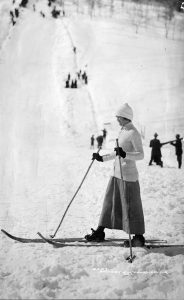
Photograph of an unidentified woman on skis at the base of Howelsen Hill in Steamboat Springs, Colorado, circa 1915 to 1920. The photograph was taken by L. C. (Louis Charles) McClure of Denver, Colorado.
Howelsen Hill in Steamboat Springs was officially Colorado’s first—now North America’s oldest operating—ski area. In 1914, Norwegian immigrant Carl Howelsen started a training ground for the then-popular sport of ski jumping. Since then, nearly 100 Winter Olympians have come out of this northern neck of Colorado, well-known for its impossibly fluffy “Champagne powder.”
The excitement trickled down to the Front Range, and by the 1920s the Denver Ski Club was welcoming a crowd for the National Ski Tournament of America Championship at Genesee Mountain, the first ski park of Denver’s Mountain Parks initiative, which is still going strong today.
The first hint at the ski lifts that would eventually carry a record-breaking 13.8 million skiers in one season (2018/2019) started with the fledgling rope tow. After all, one needed a speedier-than-walking way to get up the mountain if they wanted to spend the day skiing down.
In 1936, Colorado’s first mechanized pulley system for towing skiers, fashioned for the Pikes Peak Ski Club, went in at Glen Cove near Colorado Springs. A year later, Berthoud Pass—an alpine wonderland before there was Winter Park—opened a hard-earned, high-altitude, 878-foot-long rope tow thanks to a dedicated team of volunteers.
By 1948, Boulder had its own local ski-jumping hill—Chautauqua Mesa—with a rough rope tow reportedly powered by an engine from a World War II Dodge truck. A 200-foot-long rope tow eventually accessed higher, more skiable terrain, but a lack of consistent snow led to the hill’s demise as a ski slope in the 1950s.
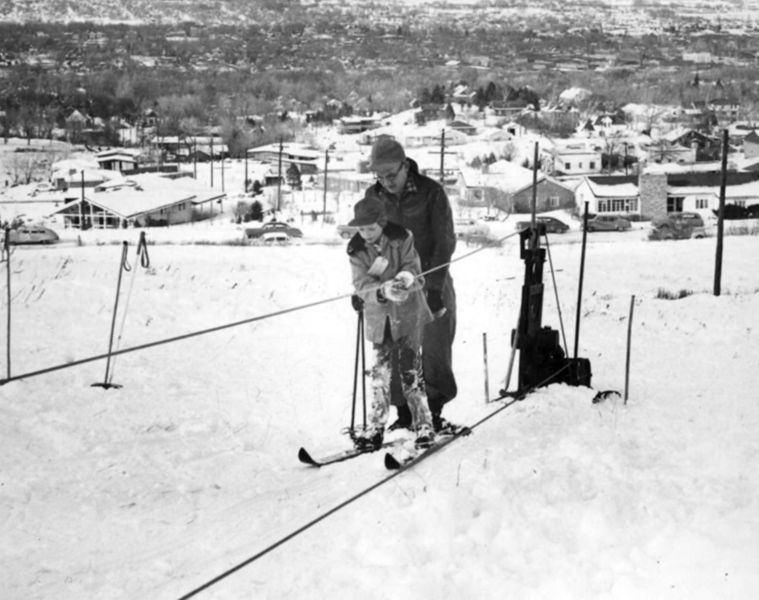
What ski haunts are still accessible?
While today there are 32 ski areas operating in Colorado accounting for more than 40,000 skiable acres, including Boulder County’s very own Eldora (circa 1962), one can’t help but wonder about the 100+ that went dark over the course of a century. Luckily, there are still fascinating fragments of Colorado’s storied ski culture within an hour’s drive of Boulder (see below).
If a trip to Vail is in your future, be sure to stop at the Colorado Snowsports Museum for more ski history. Sticking closer to home? The award-winning short documentary “Abandoned” explores some of Colorado’s lost ski areas and is free to watch at theroadwesttraveled.com/abandoned-film.
Hidden Valley
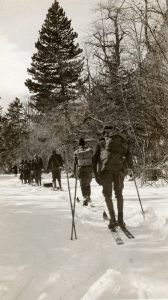
Photograph depicting Colorado Mountain Club men and women cross country skiing and snowshoeing in a single file line en route to Fern Lake in Rocky Mountain National Park. This photo was probably shot by George Harvey, Jr. during a Colorado Mountain Club trip circa 1923.
This hill officially opened near Estes Park in 1955 with two T-bars, followed by a couple of original chairlifts. But for two decades before that, legend has it that olive green, canvas-covered army trucks shuttled skiers to the mountaintop. Just miles from Estes Park in Rocky Mountain National Park, the area is still popular for sledding, tubing and backcountry skiing.
Echo Mountain
Tucked on a shady hillside between Evergreen and Idaho Springs on the way to Mount Evans, this haunt first opened in 1960. It shuttered in 1975 once I-70’s Eisenhower Tunnel could move skiers to bigger ski resorts. The mountain has seen several restarts, including a complete revival that came with new ownership, one chair lift, multiple new runs and tubing. It grows in popularity each year due to its proximity to the Front Range.
Berthoud Pass
The historic mountaintop mecca, which at its peak served a third of Colorado’s recreational skiers, was also the first area to fully allow snowboarders. The iconic Berthoud Pass, which still shows signs of early ski life, remains one of the most popular among snowshoers and backcountry skiers.




